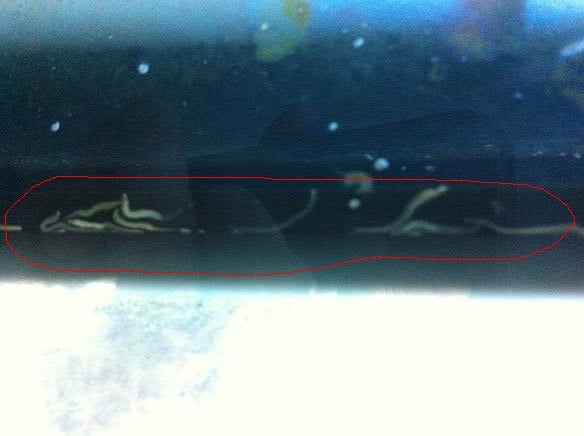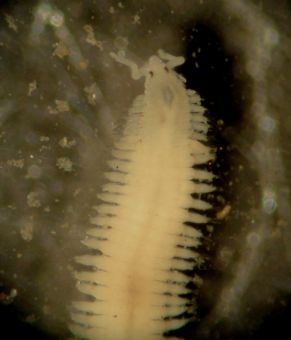#2...yes...amphipods
#3..vermitid
#1...YIKES....read this article
Planaria: How to Get Rid of White Worms in the Aquarium
Filed under
Aquarium Care by
Aquarium Care

Planaria
It can be an extremely upsetting feeling for the beginning aquarist…you’ve spent so much time researching your fish, setting up the aquarium properly and getting it up and running. The aquarium cycled well and looks beautiful, the fish are lively and in great health. One day, you turn on the light and notice filamentous white things on the sides of your aquarium. A closer inspection reveals that these aren’t just some weird algae, they’re actually thread-like white worms that are crawling up the sides of your aquarium.
First off, take a deep breath. This is a common problem. Your fish are not in imminent danger from the worms. Planaria outbreaks often occur due to overfeeding, too much excess food in the bottom of the aquarium provides an excellent environment for them to thrive. Improperly-cleaned aquariums in general can cause outbreaks, especially in carnivore tanks as their digestive systems tend to let a lot of nutrients pass through their bodies unabsorbed, making even more food available for the planaria.
Now for the bad news, while those little white worms won’t harm your fish (in fact, many fish love to eat them), the conditions that allowed them to thrive in your aquarium are potentially fatal if they’re not recognized and corrected. Excess food puts more ammonia into your aquarium system as it decomposes, which can cause deadly ammonia spikes. If the beneficial bacteria are sufficient to deal with the ammonia you will still see rising nitrate levels. While nitrates aren’t as dangerous as ammonia, it is still hazardous and must be corrected or it will eventually cause deaths.
To get rid of these worms, you have to remove their food source. Start with a thorough gravel vacuum and partial water change (30%-50% change) or, if preferred, stir the gravel on a daily basis until all the excess food and waste runs through your mechanical filtration. This should be accompanied by weekly partial water changes until all your parameters are within an acceptable range. The worms themselves can be removed if you really want them gone fast or if you’re trying to breed fish (they will eat fish eggs), though left alone the fish will probably eat them and the remainder will die of starvation as their food source is systematically removed from the aquarium.
While regular checks of the water parameters will help you identify problems before they become serious issues, I strongly recommend having a secondary precaution in place. Water maintenance products such as
EcoBio-Block will go a long way toward keeping the parameters healthy and preventing ammonia spikes.
EcoBio-Block keeps high levels of beneficial bacteria in the aquarium for up to two years, which can readily deal with these spikes. This product also provides essential minerals that the fish need to be healthy, ensuring they’re in peak condition to deal with any issues in the aquarium.
Planaria can be an unsightly problem. Luckily, they’re easy to deal with and it’s easy to correct the problems that caused them. If you’re new to fish keeping and don’t want to risk dealing with planaria or water quality issues, make sure you do your research on the care of your aquarium and its inhabitants as well as add in additional safeguards such as EcoBio-Block.










